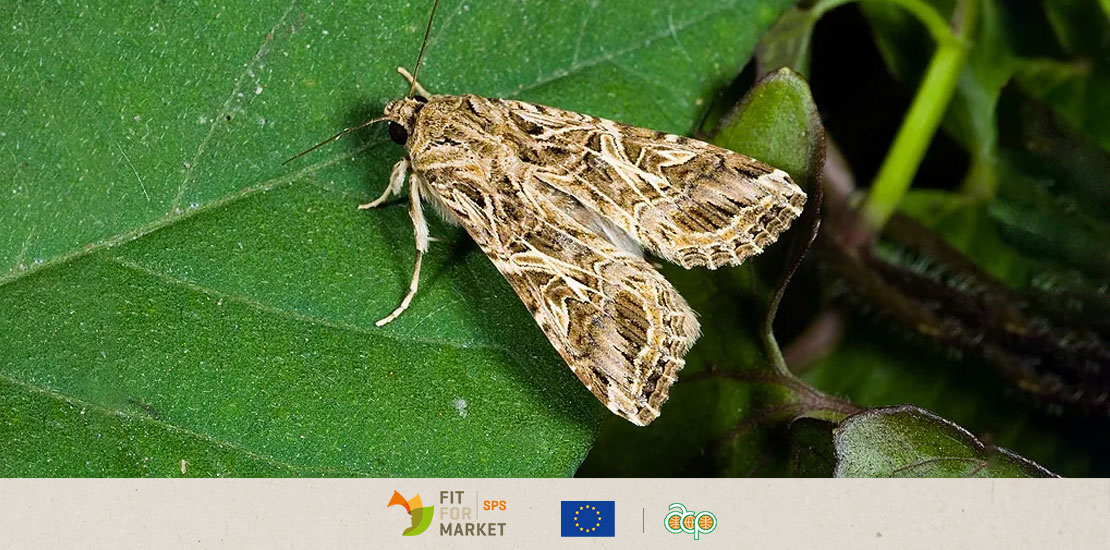EU and GB MRL changes in 2022
- 22/07/2022
- Posted by: Gaetan Dermien
- Category: ACP EN

Changes to EU and GB pesticide maximum residue levels
Following the departure of the United Kingdom from the European Union (EU), COLEACP’s monitoring of pesticide regulations now covers MRL changes in both the EU and Great Britan (GB), enabling us to keep COLEACP members and partner-beneficiaries up-to-date.
Note that EU MRLs still apply in Northern Ireland (GB covers only England, Scotland and Wales).
During the period April-June 2022, notifications of MRL changes were issued for the following:
– flutianil (EU)
– sulfoxaflor (GB)
– cyantraniliprole (GB)
– and cinmethylin (GB)
The EU and GB have also recently notified the World Trade Organization (WTO) of additional proposed changes involving a further 20 substances including 12 that are key in ACP horticulture (chlorothalonil, cyfluthrin, ethoprophos, fenamidone, propiconazole, pymetrozine, benalaxyl, epoxiconazole, fenamiphos, clothianidin, thiamethoxam and abamectin). Note that comments and concerns can be submitted to the WTO via the national contact points.
How will ACP producers/exporters be affected?
Changes to EU/GB Maximum Residue Limits (MRLs) also apply to products that are exported to the EU/GB. Growers producing for export may need to adapt their practices to meet the new MRL or, if this is not possible, stop using these products and look for an alternative method of pest management.
What should ACP producers/exporters do now?
For each use of the plant protection products (PPPs) involved, the Good Agricultural Practices (GAPs) in place will need to be checked to ensure compliance with the new MRLs. This is essential to avoid interception and destruction of exported produce at the EU/GB borders.
If you use these PPPs, it is important to liaise with your producer /exporter associations and national authorities to check whether the GAPs you currently apply are still appropriate, and enable you to meet the new MRLs. In most cases, where the MRL is lowered, adaptations to the GAP will be needed (dose rate, number of applications, application method or pre-harvest interval).
If you have any major concerns about these changes, and fear that you will be left without an effective and locally available alternative, please contact COLEACP at: network@coleacp.org.
In this Flash Info, ‘key active substances’ refers to those used/registered in one or more ACP country on horticultural crops that are frequently exported regionally or internationally. While COLEACP makes every effort to provide comprehensive information about relevant regulatory changes, it is possible that some PPPs or crops relevant to you are not included in our list of key substances/crops. We recommend therefore that you check the final section of this FlashInfo, which details all the changes in 2022, to make sure that you are aware of any other changes that could affect you.
Changes to EU MRLs
Flutianil
The European Commission (EC) recently issued a notification of changes to flutianil MRLs within the EU. Commission Regulation (EU) 2022/566 was applied on 28 April 2022 and includes changes to MRLs on a number of fruit and vegetable crops(Table 1).
Table 1. EU MRL changes for flutianil on fruit and vegetables.
| Crop | Previous EU MRL [mg/kg] | New EU MRL [mg/kg] |
| Apples | 0.01 (*) | 0.15 |
| Cherries | 0.01 (*) | 0.4 |
| Strawberries | 0.01 (*) | 0.3 |
| Cucumber | 0.01 (*) | 0.03 |
| Courgettes | 0.01 (*) | 0.03 |
Changes to GB MRLs
In may 2022, the UK Health and Safety Executive (HSE) issued notifications of changes to sulfoxaflor, cyantraniliprole and cinmethylin MRLs within Great Britan. Sulfoxaflor and cyantraniliprole are key substances for ACP horticulture (Table 2).
Table 2. Great Britain (GB) maximum residue level (MRL) changes in 2022 indicating the key substances and crops most affected
| Active substance | Crop | Previous GB MRL [mg/kg] | New GB MRL [mg/kg] | Date into force | Regulation |
| sulfoxaflor | Blackberries | 0.01 (*) | 0,3 | 23/05/2022 | GB MRL 2022/004 |
| sulfoxaflor | Dewberries | 0.01 (*) | 0,3 | 23/05/2022 | GB MRL 2022/004 |
| sulfoxaflor | Raspberries | 0.01 (*) | 0,3 | 23/05/2022 | GB MRL 2022/004 |
| cyantraniliprole | Leeks | 0.01 (*) | 0,6 | 01/06/2022 | GB MRL 2022/006 |
| cyantraniliprole | Blackberries | 0.01 (*) | 1,5 | 10/06/2022 | GB MRL 2022/007 |
| cyantraniliprole | Raspberries | 0.01 (*) | 1,5 | 10/06/2022 | GB MRL 2022/007 |
| cyantraniliprole | Chinese cabbages/petsai | 0.01 (*) | 20 | 21/06/2022 | GB MRL 2022/009 |
Further Proposed MRL changes
A further 20 proposed (draft) MRL changes have recently been notified to the WTO (Table 3 ), 12 of which are key for ACP horticulture (chlorothalonil, cyfluthrin, ethoprophos, fenamidone, propiconazole, pymetrozine, benalaxyl, epoxiconazole, fenamiphos, clothianidin, thiamethoxam and abamectin).
Table 3. World Trade Organization (WTO) notifications of new draft regulations amending MRLs of substances, potentially affecting ACP horticulture products.
| Active substance | Notification originated from | Key substances* | Publication | Comment deadline | Link |
| chlorothalonil | GB | X | 08/04/2022 | 07/06/2022 | link |
| 1-methyl-3-(trifluoromethyl)-1H-pyrazole-4-carboxamide | EU | 22/06/2022 | 21/08/2022 | link | |
| cycloxydim | EU | 22/06/2022 | 21/08/2022 | link | |
| cyflumetofen | EU | 22/06/2022 | 21/08/2022 | link | |
| cyfluthrin | EU | X | 22/06/2022 | 21/08/2022 | link |
| metobromuron | EU | 22/06/2022 | 21/08/2022 | link | |
| penthiopyrad | EU | 22/06/2022 | 21/08/2022 | link | |
| ethoprophos | GB | X | 27/06/2022 | 26/08/2022 | link |
| fenamidone | GB | X | 27/06/2022 | 26/08/2022 | link |
| methiocarb | GB | 27/06/2022 | 26/08/2022 | link | |
| propiconazole | GB | X | 27/06/2022 | 26/08/2022 | link |
| pymetrozine | GB | X | 27/06/2022 | 26/08/2022 | link |
| benalaxyl | EU | X | 04/07/2022 | 02/09/2022 | link |
| bromoxynil | EU | 04/07/2022 | 02/09/2022 | link | |
| chlorsulfuron | EU | 04/07/2022 | 02/09/2022 | link | |
| epoxiconazole | EU | X | 04/07/2022 | 02/09/2022 | link |
| fenamiphos | EU | X | 04/07/2022 | 02/09/2022 | link |
| clothianidin | EU | X | 06/07/2022 | 04/09/2022 | link |
| thiamethoxam | EU | X | 06/07/2022 | 04/09/2022 | link |
| abamectin | EU | X | 12/07/22 | 10/09/2022 | link |
*Key active substances are those used/registered in one or more ACP country on horticultural crops that are frequently exported regionally or internationally.
All draft regulations on MRL changes are notified to the World Trade Organization (WTO) under the WTO Sanitary and Phytosanitary Information Management System for a commenting period of 60 days. This obligation applies to all member countries of the WTO, as the lowering of MRLs might lead to trade barriers. This is an opportunity to be informed in advance of proposed changes, and to take any necessary action before the new regulation comes into force. It is also an opportunity to submit concerns about potential difficulties (trade barriers) that these changes could create. WTO member countries can submit comments via their WTO National Contact Point.
All MRL changes that have so far entered into force in 2022
Table 4 shows all new MRLs that have entered into force in 2022. If any PPP that you use on crops for export to the EU or GB is listed here, we recommend that you check the regulation itself using the link provided. If you require additional information, or face particular problems as a result of these changes, please contact COLEACP at: network@coleacp.org.
Table 4. European Union (EU) and Great Britain (GB) maximum residue level (MRL) changes introduced to date and entering into force in 2022.
| Active substance | Key substances* | Regulation | Publication | Date into force | Link |
| Flutriafol | X | GB MRL 2022/001 | 11/02/2021 | 28/01/2022 | link |
| dimethoate | X | GB MRL 2021/003 | 05/07/2021 | 05/01/2022 | link |
| omethoate | GB MRL 2021/003 | 05/07/2021 | 05/01/2022 | link | |
| ametoctradin | X | Commission Regulation (EU) 2021/1110 | 07/07/2021 | 27/01/2022 | link |
| bixafen | Commission Regulation (EU) 2021/1110 | 07/07/2021 | 27/01/2022 | link | |
| fenazaquin | Commission Regulation (EU) 2021/1110 | 07/07/2021 | 27/01/2022 | link | |
| spinetoram | X | Commission Regulation (EU) 2021/1110 | 07/07/2021 | 27/01/2022 | link |
| tefluthrin | Commission Regulation (EU) 2021/1110 | 07/07/2021 | 27/01/2022 | link | |
| thiencarbazone-methyl | Commission Regulation (EU) 2021/1110 | 07/07/2021 | 27/01/2022 | link | |
| 6-benzyladenine | Commission Regulation (EU) 2021/1841 | 21/10/2021 | 10/05/2022 | link | |
| aminopyralid | Commission Regulation (EU) 2021/1841 | 21/10/2021 | 10/05/2022 | link | |
| amisulbrom | Commission Regulation (EU) 2021/1864 | 25/10/2021 | 14/05/2022 | link | |
| flubendiamide | X | Commission Regulation (EU) 2021/1864 | 25/10/2021 | 14/05/2022 | link |
| meptyldinocap | Commission Regulation (EU) 2021/1864 | 25/10/2021 | 14/05/2022 | link | |
| metaflumizone | X | Commission Regulation (EU) 2021/1864 | 25/10/2021 | 14/05/2022 | link |
| propineb | X | Commission Regulation (EU) 2021/1864 | 25/10/2021 | 14/05/2022 | link |
| imidacloprid | X | Commission Regulation (EU) 2021/1881 | 27/10/2021 | 16/05/2022 | link |
| acequinocyl | Commission Regulation (EU) 2021/2202 | 14/12/2021 | 03/01/2022 | link | |
| Bacillus subtilis strain IAB/BS03 | X | Commission Regulation (EU) 2021/2202 | 14/12/2021 | 03/01/2022 | link |
| emamectin | X | Commission Regulation (EU) 2021/2202 | 14/12/2021 | 03/01/2022 | link |
| flutolanil | Commission Regulation (EU) 2021/2202 | 14/12/2021 | 03/01/2022 | link | |
| imazamox | Commission Regulation (EU) 2021/2202 | 14/12/2021 | 03/01/2022 | link | |
| dazomet | Commission Regulation (EU) 2022/78 | 20/01/2022 | 09/08/2022 | link | |
| hexythiazox | X | Commission Regulation (EU) 2022/78 | 20/01/2022 | 09/08/2022 | link |
| metam | Commission Regulation (EU) 2022/78 | 20/01/2022 | 09/08/2022 | link | |
| methylisothiocyanate | Commission Regulation (EU) 2022/78 | 20/01/2022 | 09/08/2022 | link | |
| flonicamid | Commission Regulation (EU) 2022/85 | 21/01/2022 | 10/02/2022 | link | |
| acrinathrin | X | Commission Regulation (EU) 2022/93 | 25/01/2022 | 14/02/2022 | link |
| fluvalinate | Commission Regulation (EU) 2022/93 | 25/01/2022 | 14/02/2022 | link | |
| folpet | X | Commission Regulation (EU) 2022/93 | 25/01/2022 | 14/02/2022 | link |
| fosetyl-aluminium | X | Commission Regulation (EU) 2022/93 | 25/01/2022 | 14/02/2022 | link |
| isofetamid | Commission Regulation (EU) 2022/93 | 25/01/2022 | 14/02/2022 | link | |
| Pepino Mosaic Virus, EU strain, mild isolate Abp1 | Commission Regulation (EU) 2022/93 | 25/01/2022 | 14/02/2022 | link | |
| Pepino Mosaic Virus, CH2 strain, mild isolate Abp2 | Commission Regulation (EU) 2022/93 | 25/01/2022 | 14/02/2022 | link | |
| spinetoram | X | Commission Regulation (EU) 2022/93 | 25/01/2022 | 14/02/2022 | link |
| spirotetramat | X | Commission Regulation (EU) 2022/93 | 25/01/2022 | 14/02/2022 | link |
| fluxapyroxad | GB MRL 2022/002 | 01/03/2022 | 22/03/2022 | link | |
| oxathiapiprolin | GB MRL 2022/003 | 01/03/2022 | 22/03/2022 | link | |
| acetic acid | Commission Regulation (EU) 2022/476 | 25/03/2022 | 14/04/2022 | link | |
| azoxystrobin | X | Commission Regulation (EU) 2022/476 | 25/03/2022 | 14/04/2022 | link |
| benzovindiflupyr | Commission Regulation (EU) 2022/476 | 25/03/2022 | 14/04/2022 | link | |
| cyantraniliprole | Commission Regulation (EU) 2022/476 | 25/03/2022 | 14/04/2022 | link | |
| cyflufenamid | Commission Regulation (EU) 2022/476 | 25/03/2022 | 14/04/2022 | link | |
| emamectin | Commission Regulation (EU) 2022/476 | 25/03/2022 | 14/04/2022 | link | |
| flutolanil | Commission Regulation (EU) 2022/476 | 25/03/2022 | 14/04/2022 | link | |
| lime sulphur | Commission Regulation (EU) 2022/476 | 25/03/2022 | 14/04/2022 | link | |
| maltodextrin | X | Commission Regulation (EU) 2022/476 | 25/03/2022 | 14/04/2022 | link |
| proquinazid | Commission Regulation (EU) 2022/476 | 25/03/2022 | 14/04/2022 | link | |
| flutianil | Commission Regulation (EU) 2022/566 | 08/04/2022 | 28/04/2022 | link | |
| sulfoxaflor | X | GB MRL 2022/004 | 01/05/2022 | 23/05/2022 | link |
| cyantraniliprole | X | GB MRL 2022/006 | 01/05/2022 | 01/06/2022 | link |
*Key active substances are those used/registered in one or more ACP country on horticultural crops that are frequently exported regionally or internationally.


